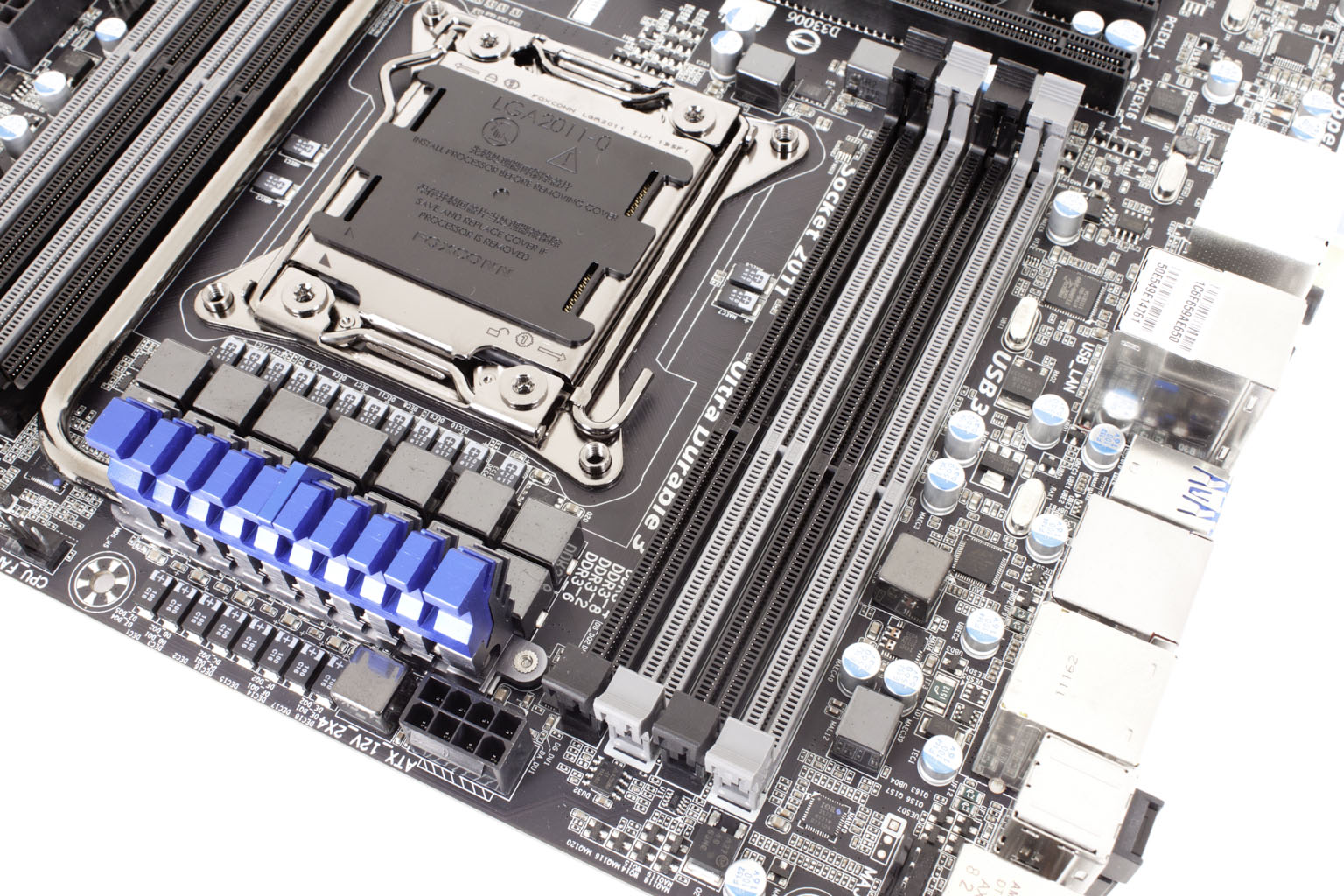The Box and Goodies -
Gigabyte has moved to a much cleaner look than what we have seen in the past. The stark white outside with the simple 3D wireframe box is quite nice looking.
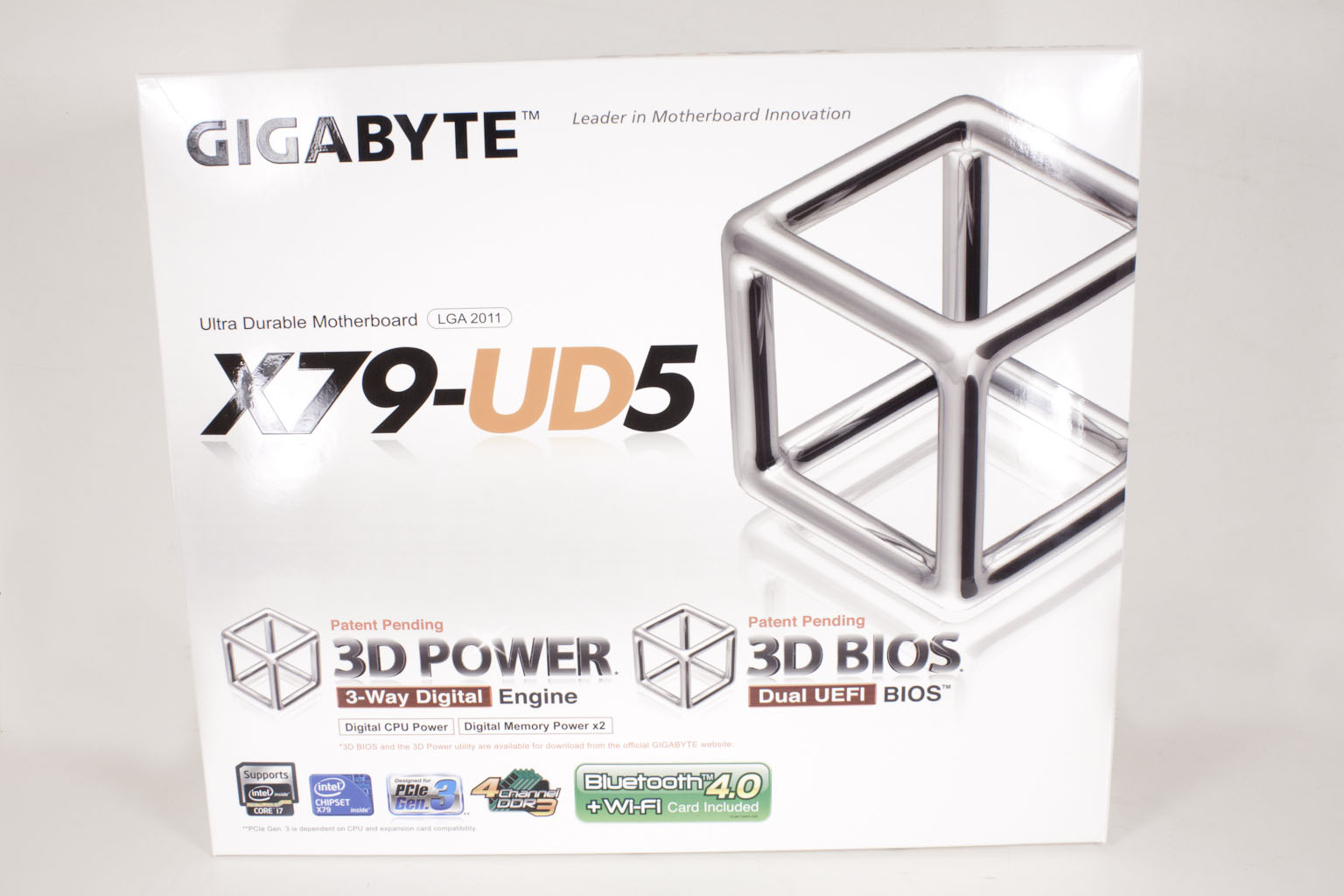 |
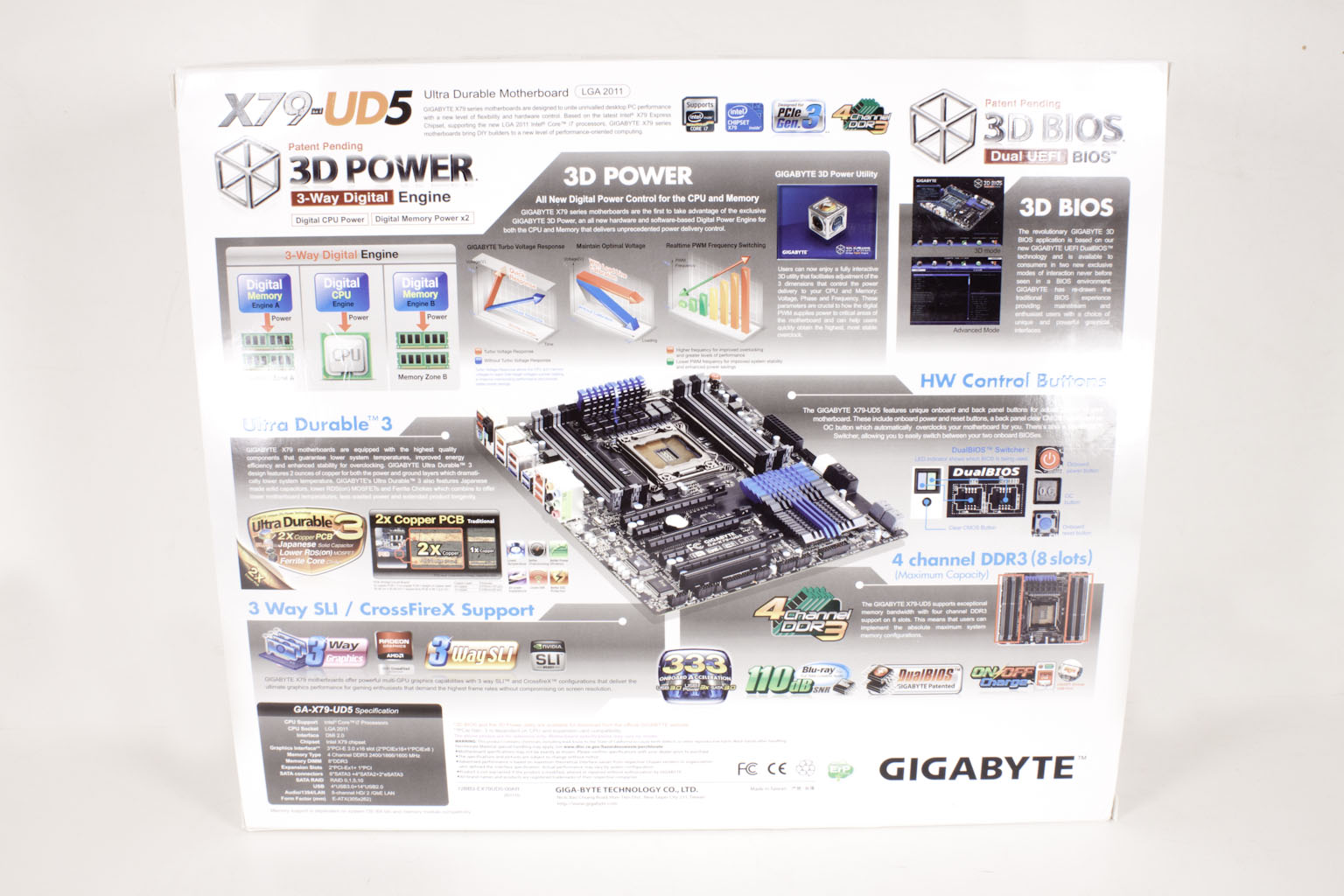 |
The back gets a little more complex, but then again it has a lot to try and show you in limited space.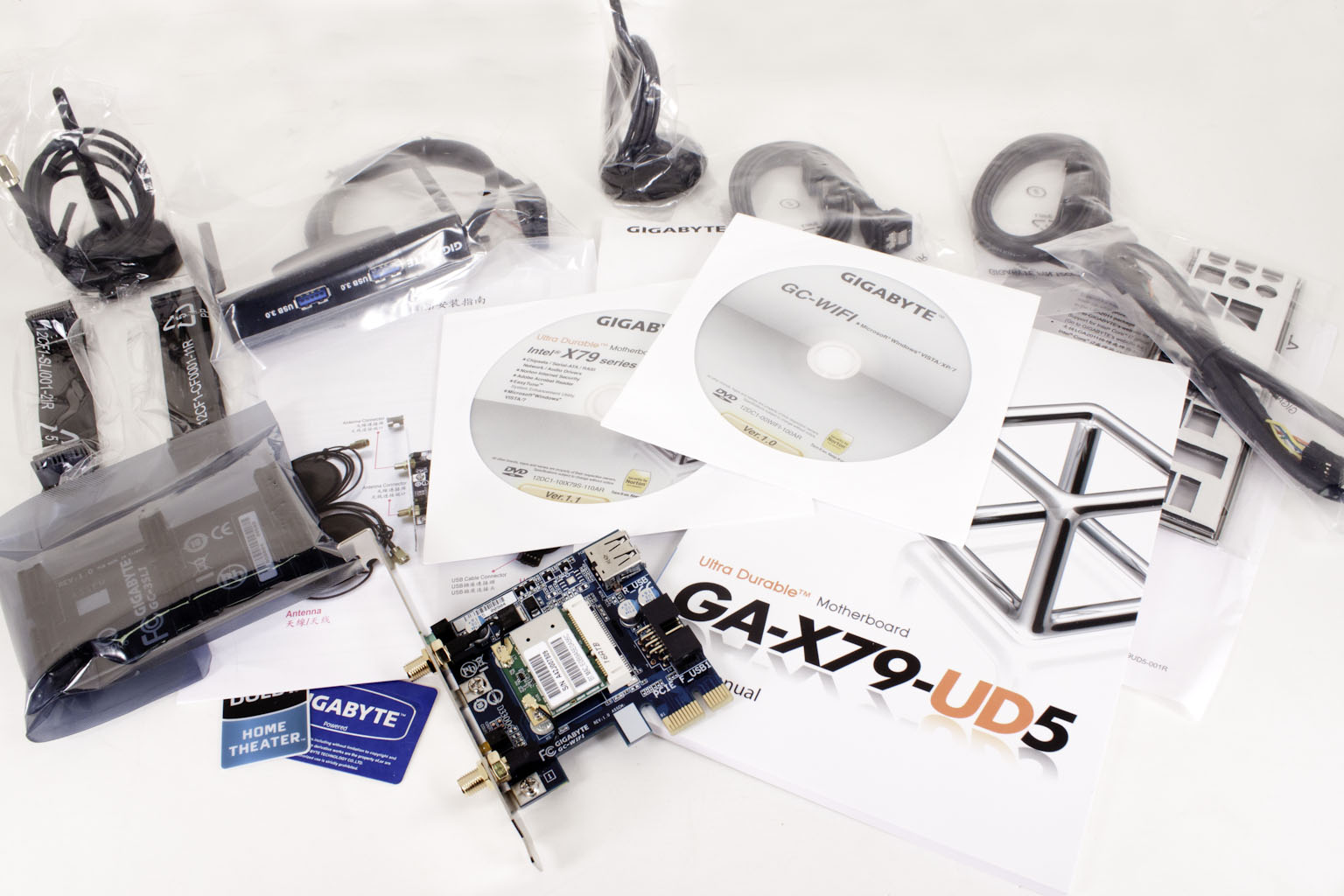
Gigabyte also offers you a ton of goodies inside the box including a USB 3.0 front panel box and PCIe x1 wireless adapter with Bluetooth 4.0. The antennas leave a little to be desired, but at least there are two meaning you should be able to get decent real-world speeds on this.
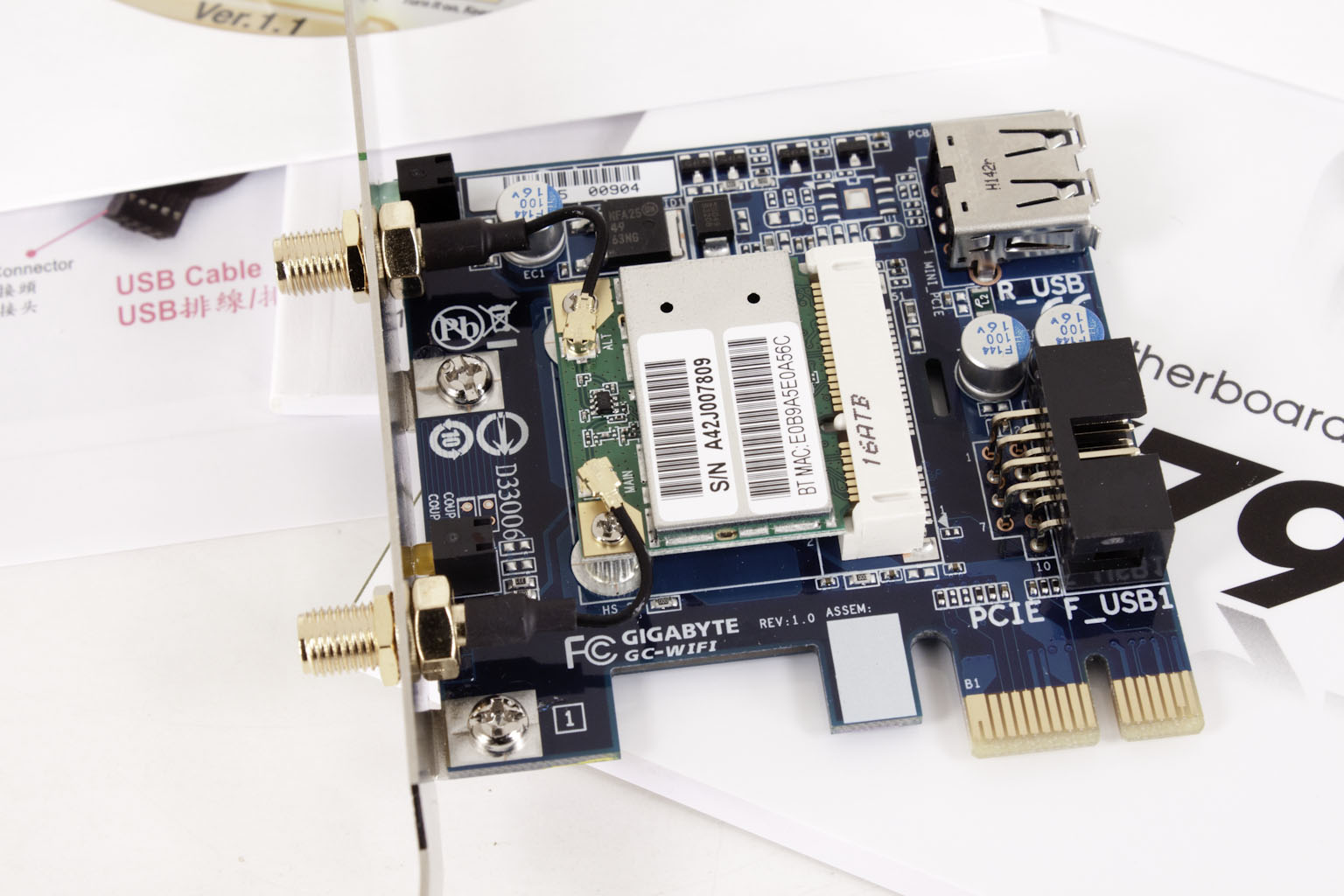 |
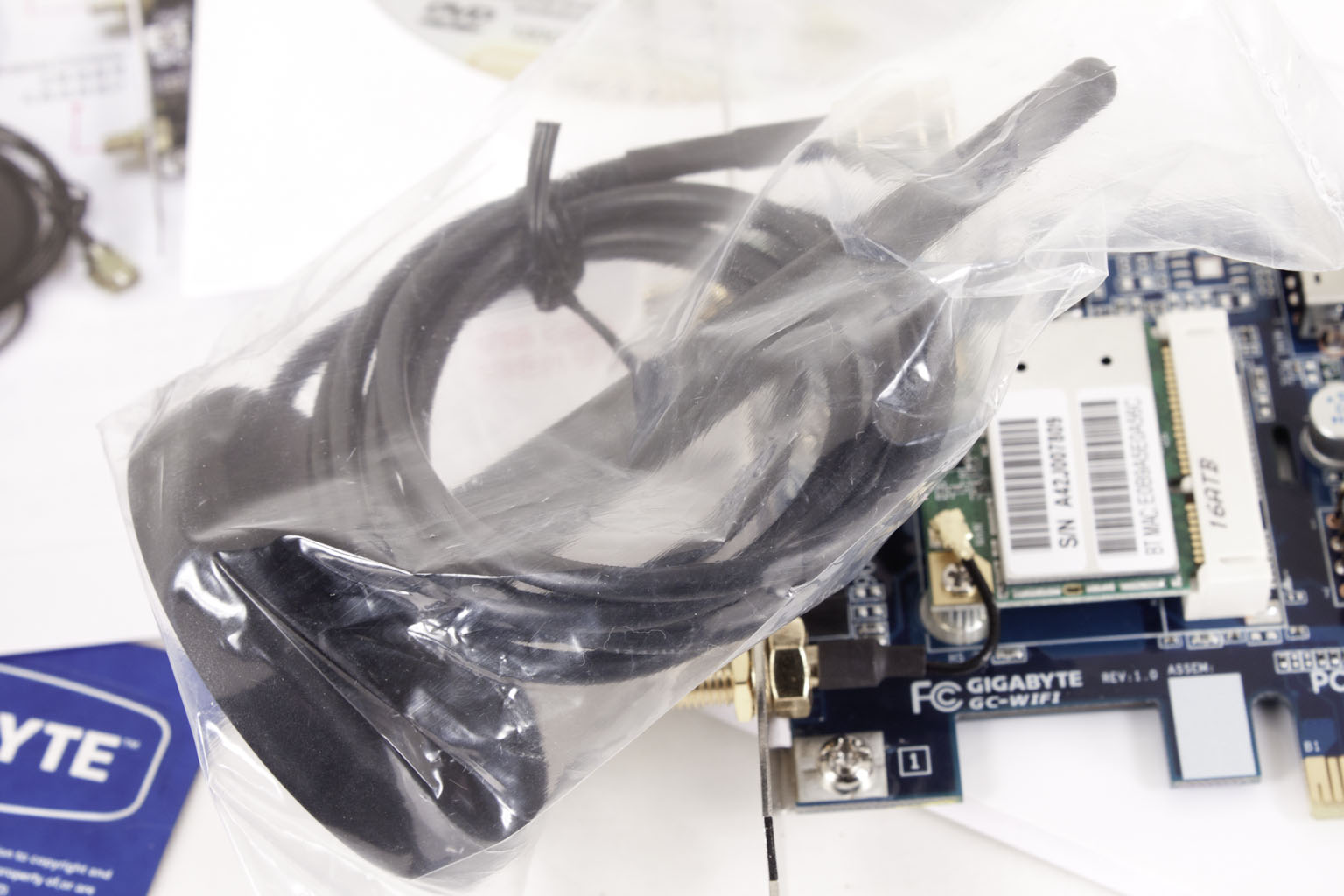 |
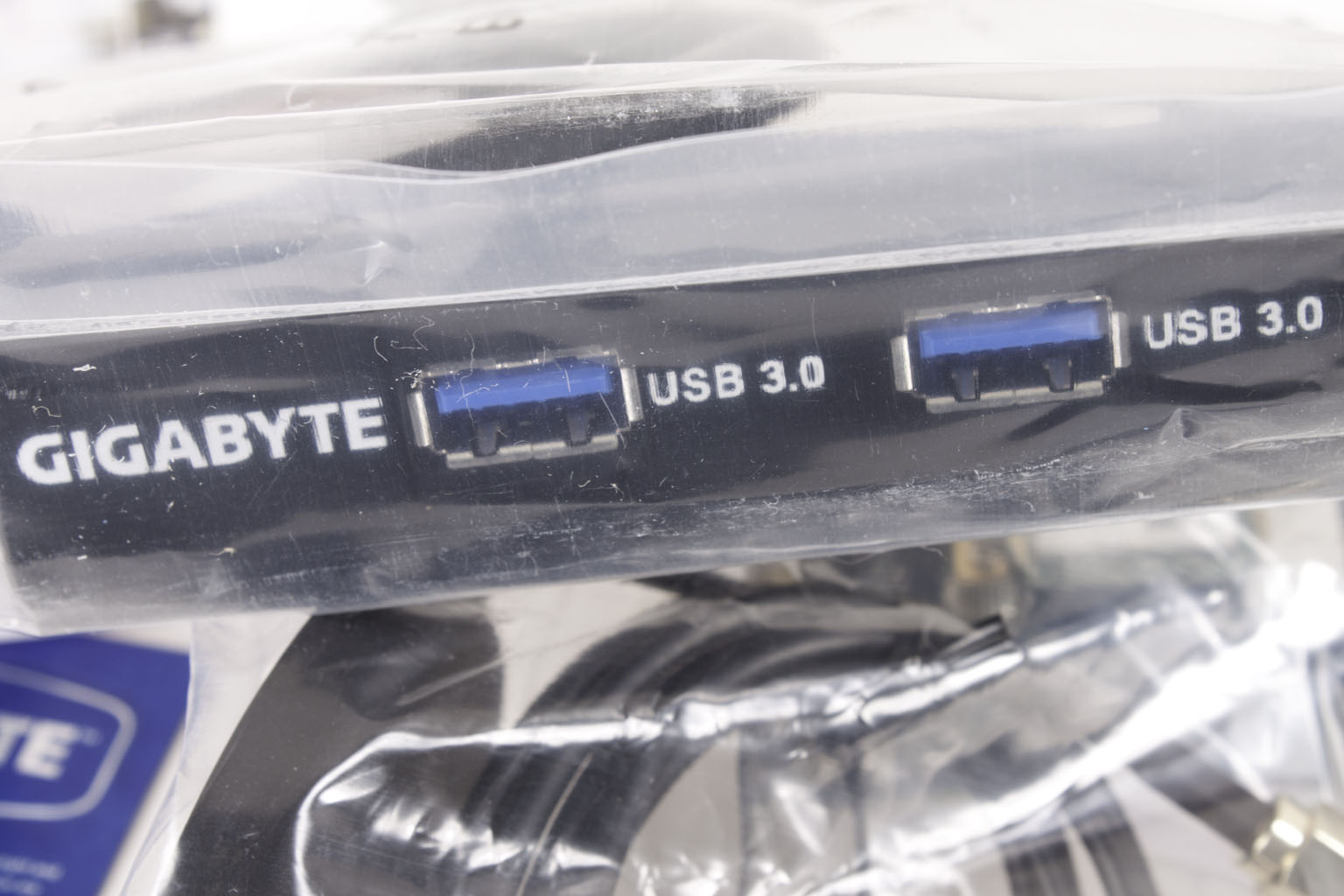 |
The Layout -
The layout of any motherboard is important. Even simple mistakes in component placement or the signal traces can cause major issued in performance and stability. With the ATX form factor we find that this is even truer; the devices we drop onto them demand more and cleaner power while the signal speeds push faster and faster. The GA-X78-UD5 is the typical ATX layout and is fairly typical as far as the layout for an X79 motherboard. Unlike the G1.Assassin 2 the X79-UD5 has the full eight slots for memory. This could mean a couple of things, on the one side it could mean slower top-end memory performance or it could simply mean that Gigabyte had more time to get the training layout down (and they also did not have to worry about an complete audio card on the board.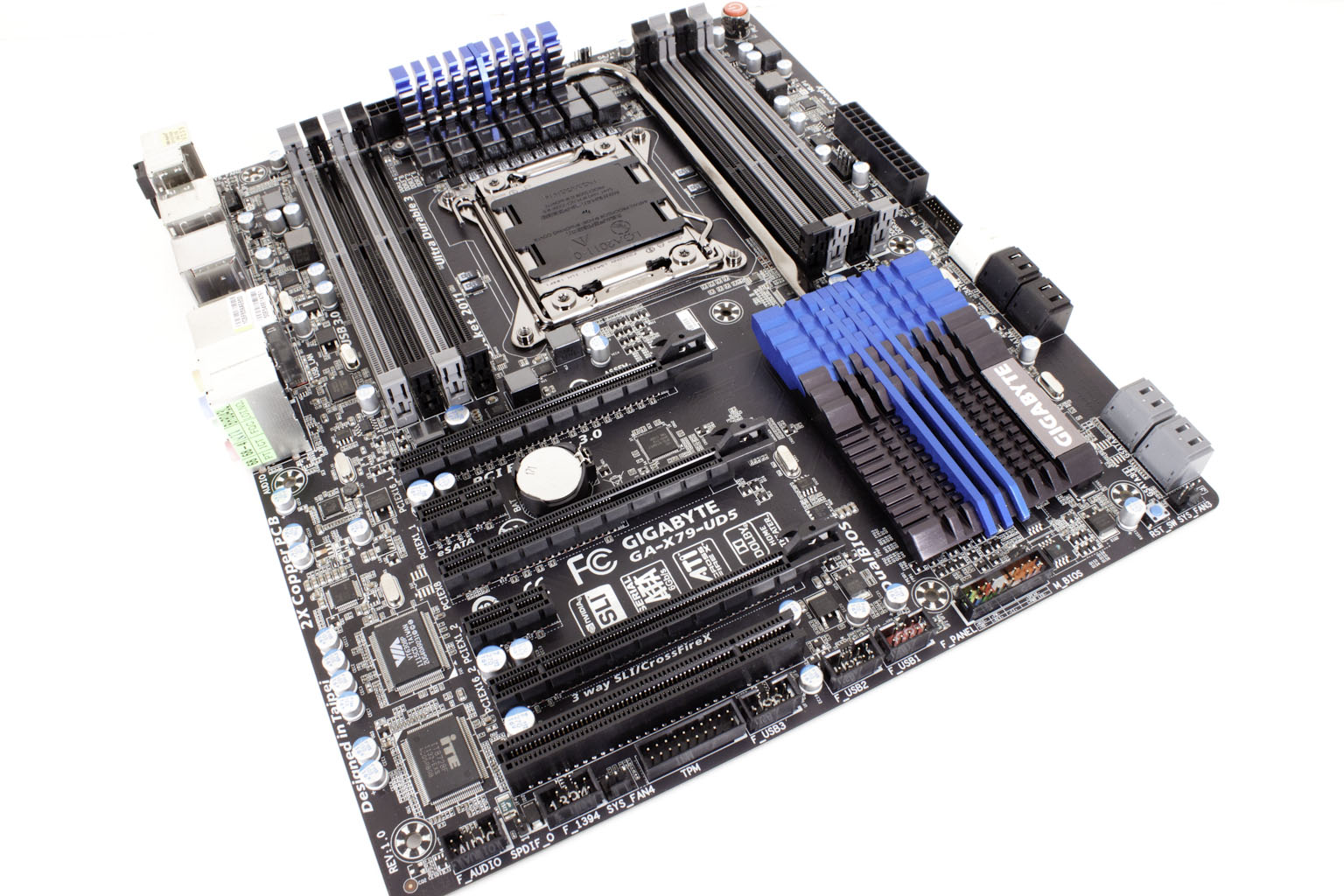
The cooling on the board was much smaller than I would have thought and does make us wonder if we are going to be able to hit the same clocks as we did with the G1.Assassin2. The rest of the board is fairly typical with three PCIe x16 mechanical slots (only two are fully x16 electrical) and even a PCI 2.0 slot for those legacy devices.
{gallery}stories/Reviews/01-26-2012/Board{/gallery}
Features -
In the current market motherboard (and indeed almost all component) performance is very close. The days of a large performance advantage between boards using the same chipset are long gone. That is unless someone makes a HUGE mistake (like runs traces completely wrong). Now, the thing that differentiates different products is the features. These are things like power management, extra slots, better audio CODECs etc. It is these items that R&D teams work so hard to drop into what are really identical pieces of hardware at their most basic level.
Excellent -
3D Power
Quad Channel RAM
Dual 3D BIOS
Wireless N and Bluetooh 4.0
Three-Way SLI and Crossfire X
Our list here is not as extensive as we would have liked to see. Many of the items that we are talking about due to the newness of the X79 platform will be stock features very soon. The advent of Three-Way SLI and Crossfire on all X79 boards is something that will soon drop into our Floor Mats listing.
However other items like the 3D Power and the Dual BIOS are nice touches that we hope to expand upon in the second half of our review.
In the middle (sort of good) -
110db Audio
I am something of an Audiophile and this, If it is real) is a great feature and can improve the overall quality of the board experience (especially gaming). We are looking forward to seeing just how good this sounds once we get it on the test bench.
Floor Mats -
On/Off Charge
On-board power and reset controls
These are items that we are finding on just about every board in this class now. They are nice, but as you see them more and more they will not be the reason you buy one board over another.
Conclusion –
The X79-UD5 is a nice looking board with some potential for performance on paper. We do have our concerns at this point in the review (heat and memory performance), but it is entirely possible that Gigabyte has accounted for these and we will not see an issue. On the other side, while the X79-UD5 has a lot to offer it is actually fairly light on real or compelling features. At $330 we hope the performance is amazing, as there is a lot to account for here. For now, we are looking forward to getting this up on our test bench and seeing what we can get it to do.
Discuss this in our Forum

